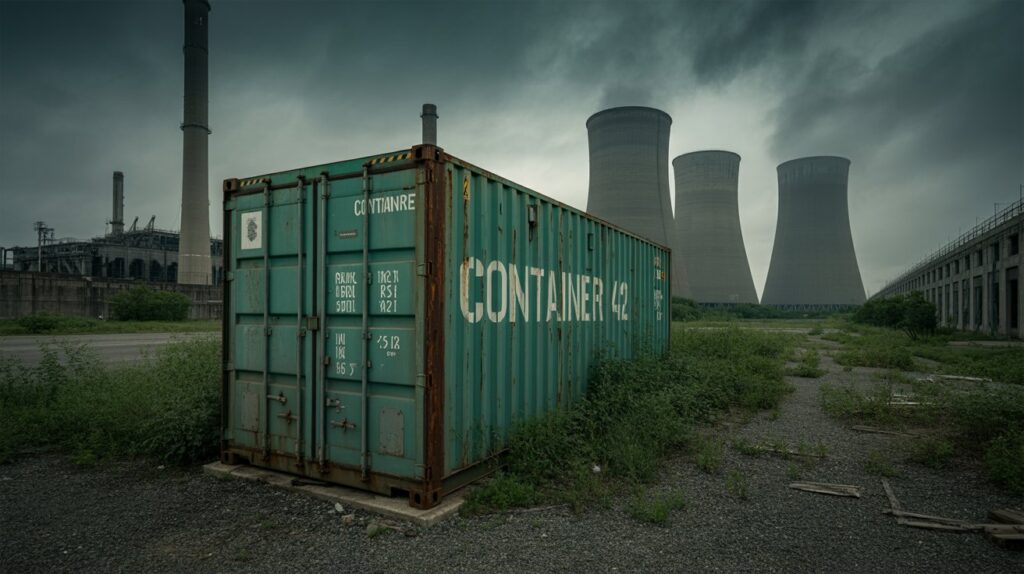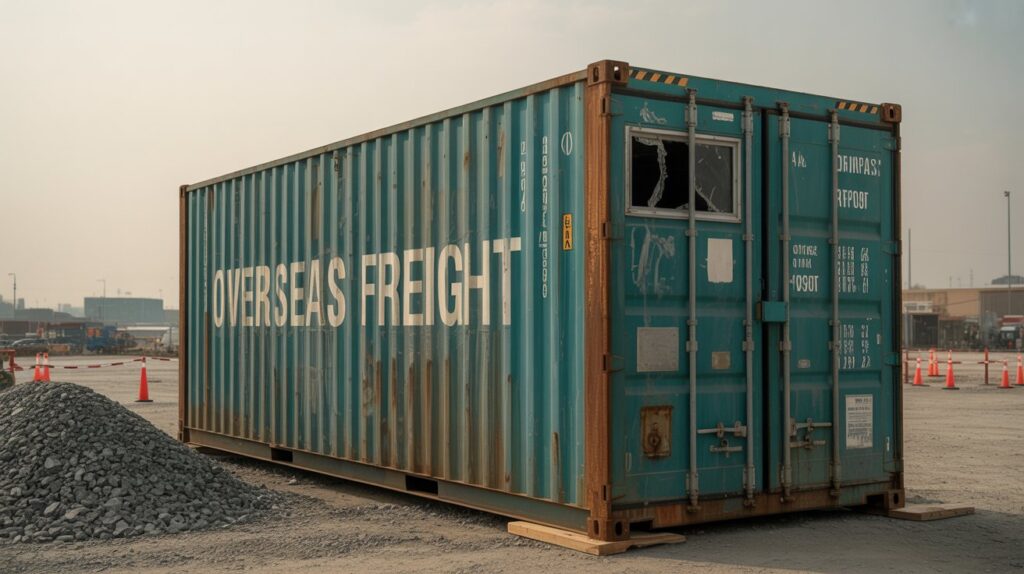Have you ever wondered why those massive containers you see on ships, trucks, and trains have walls with a zig-zag pattern? You might think it’s just for aesthetics, but there’s a fascinating engineering story behind those grooves. This article will take you on an insightful journey to uncover the purpose behind corrugated container walls, why they are so common in the shipping industry, and what advantages they offer. So, let’s get started.
Understanding Corrugated Designs
To begin with, let’s explore what corrugation actually means. Corrugation involves a series of parallel ridges and grooves made into a surface. This design provides several mechanical advantages, which is why it’s prevalent in many industries, from cardboard packaging to roofing and, of course, shipping containers.
The Basics of Corrugation
Corrugation enhances the strength and rigidity of a surface without significantly adding to its weight. By creating a wave-like shape, the structural integrity of a material increases, making it more resilient to physical stress and pressure.
Historical Perspective
Corrugated designs have been around since the 19th century, initially applied in the production of corrugated iron for roofing. Over time, the principle of corrugation was adapted across various domains due to its benefits, particularly in the field of transportation and logistics.
Why Use Corrugation in Containers?
The shipping industry heavily relies on efficiency and durability. The corrugated design helps meet these requirements by boosting a container’s strength-to-weight ratio. This translates into better load-bearing capacity and improved durability against environmental stresses like wind and impact.
Structural Benefits
Now that you understand what corrugation is, let’s delve deeper into how corrugated walls add to the structural integrity of a container. The design is more than just a series of parallel grooves; it’s a strategic method to achieve durability and efficiency.
Enhanced Strength
The corrugated pattern substantially increases the walls’ resistance to compression. That’s crucial because containers need to withstand stacked vertical loads when placed on top of each other. Thanks to corrugation, containers can handle significant weight without collapsing or deforming.
Impact Resistance
Accidental knocks or jerks are a part of the transportation process, whether during loading, unloading, or transit. Corrugated walls can absorb more energy from impacts due to their design, reducing the risk of dents and maintaining the container’s shape over time.
Durability in Harsh Conditions
Shipping containers often face rough conditions at sea or on roads. Corrugated walls can endure high winds, temperature changes, and even minor abrasions more effectively than flat surfaces, making them an ideal choice for international shipping.

Economic Considerations
The choice of using corrugated walls in containers isn’t solely about strength or aesthetics. Economic factors also play a significant role. The shipping industry is highly cost-sensitive, and any feature that can enhance efficiency or reduce costs becomes invaluable.
Material Efficiency
Corrugation allows for the use of thinner materials without compromising on strength. This directly results in lower material costs, making the containers less expensive to produce and buy. Less material also translates to lesser weight, which contributes to fuel efficiency in transport.
Longer Lifespan
The robust design of corrugated walls means that they last longer, reducing the need for frequent replacements. The longer a container can remain in service without significant degradation, the lower the cost of ownership becomes over time.
Low Maintenance Costs
Economically, containers with corrugated walls require less maintenance. Their ability to resist dents and structural damage minimizes repair work, which is a substantial saving in both time and resources for shipping companies.
Environmental Impact
In today’s world, the environmental aspect of container design cannot be overlooked. It’s essential to understand how the choice of design affects sustainability and environmental considerations.
Reduced Energy Consumption
As previously mentioned, the use of less material and lighter containers contribute to lower energy consumption while transporting goods. This not only decreases fuel usage but also reduces the carbon footprint of shipping operations.
Recycling Opportunities
Many shipping containers, once they have served their time, are repurposed or recycled. The materials used in corrugated containers are generally more accessible to recycle, which aligns with the growing emphasis on reducing industrial waste.
Sustainable Materials
The use of steel, particularly high-tensile strength steel in corrugated containers, ensures a more sustainable life cycle. This material not only maintains its properties over extended use but can also be recycled with minimal environmental impact.
Practical Applications
Let’s not forget the practical side of why corrugated walls are indispensable. Beyond the sheer mechanics and economics, the corrugated design is intrinsic to the functional versatility of containers in everyday logistics.
Flexibility in Usage
Containers with corrugated walls are incredibly versatile. They can be used across various transportation methods, including ships, trains, and trucks, without requiring any modifications. This flexibility is crucial for global supply chains.
Intermodal Compatibility
For a container to efficiently switch from one mode of transportation to another (like from sea to rail), it needs to be standardized and structurally sound. Corrugated walls fit this bill perfectly, ensuring seamless intermodal transitions.
Ease of Repair
Though corrugated walls are designed to be robust, they aren’t invincible. When repairs are necessary, the design allows for straightforward, cost-effective fixes, often without needing specialized labor or complex procedures.
Alternatives and Comparisons
While corrugated walls dominate the container industry, various alternatives have been explored. It’s worth considering how these compare and what situations might call for different designs.
Flat Panels
Some containers use flat panels; however, these lack the intrinsic strength and damage resistance of corrugated materials. They’re primarily used in specialized environments where the added rigidity isn’t a significant concern.
Composite Materials
In recent years, materials like fiberglass or aluminum have been explored for container walls. While they offer lighter alternatives, they can’t match the durability and cost-efficiency of corrugated steel in most situations.
Reinforced Containers
For specific high-security or high-stress environments, reinforced containers are used. These still often follow a corrugated pattern but incorporate additional materials or structural supports for added benefits.

Future of Container Design
As technological advancements continue to influence the shipping industry, the future of container design remains an exciting avenue filled with possibilities. It’s instructive to speculate how corrugated containers might evolve.
Technological Innovations
With continuous developments in materials engineering, we may see new kinds of corrugated designs that further optimize weight, strength, and environmental impact. Smart materials that self-repair or adapt to environmental conditions could redefine container longevity and effectiveness.
Digital Monitoring
The integration of IoT (Internet of Things) technology in shipping can make corrugated containers even more effective by providing real-time tracking and status updates. This could revolutionize maintenance schedules and increase efficiency even further.
Sustainable Practices
Sustainability is becoming more deeply ingrained in every aspect of industry. Future container designs will likely focus on maximizing recyclable and biodegradable materials, pushing corrugated design to new eco-friendly heights.
Conclusion
By now, you should have a comprehensive understanding of why container walls are corrugated. It’s not just about strength and durability, but also about economic efficiency, environmental sustainability, and practical flexibility. Corrugated walls represent a beautiful confluence of engineering principles applied to solve real-world challenges in the shipping industry. The ripple effects of this design extend to countless facets of global trade, leaving an indelible mark on how goods travel across the world.
Ultimately, the corrugated design is a testament to human ingenuity in finding elegant solutions to complex problems, allowing for the seamless and cost-effective movement of everything from essential goods to luxury items around the globe. As advancements in technology continue and the world’s emphasis on sustainability grows, corrugated containers are poised to remain a cornerstone of international logistics for many years to come.

